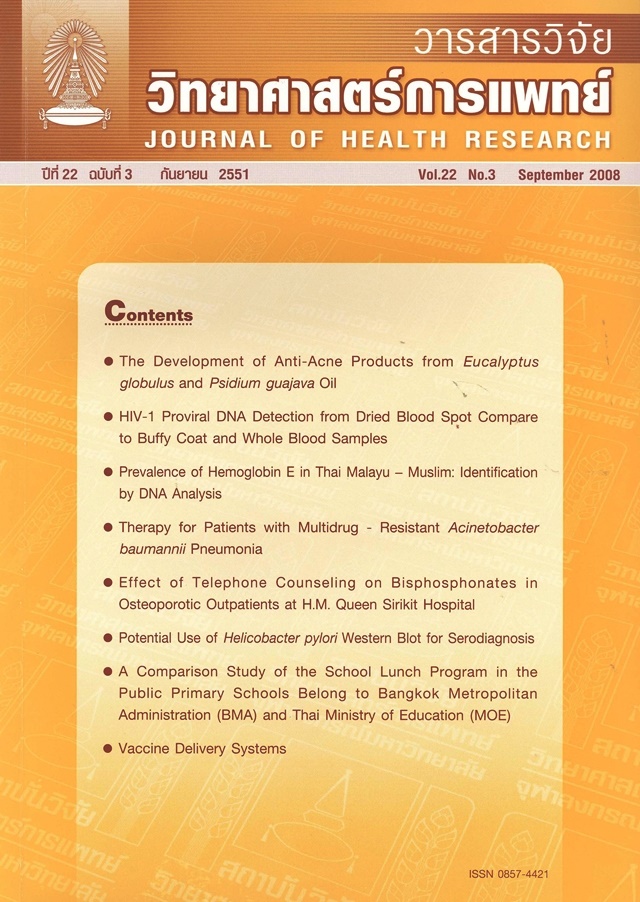Potential Use of Helicobacter pylori Western Blot for Serodiagnosis
Keywords:
Helicobacter pylori, rabbit, Western blotAbstract
Helicobacter pylori infection has been known to associate with gastric and peptic ulcer, mucosa-associated lymphoid tissue, lymphoma and gastric carcinoma. The hyperimmune serum prepared from six New Zealand White rabbits, by immunizing four times, biweekly with Helicobacter pylori bacterial extracts were used in this assay. The antisera were collected every week during week 0-11. The Western blots demonstrated at least 13 reactive bands with distinct molecular masses of approximate 80, 78, 73, 70, 63, 60, 28, 27, 24, 23, 18, 15 and 11 kDa. Increased antibody reactivity of hyperimmune sera against H. pylori developed intensive bands between 15- 28 kDa which were depended on time and dose exposures. This preliminary study suggested that the Western blot could be used as a potential serodiagnosis of H. pylori infection in further veterinary public health study.







